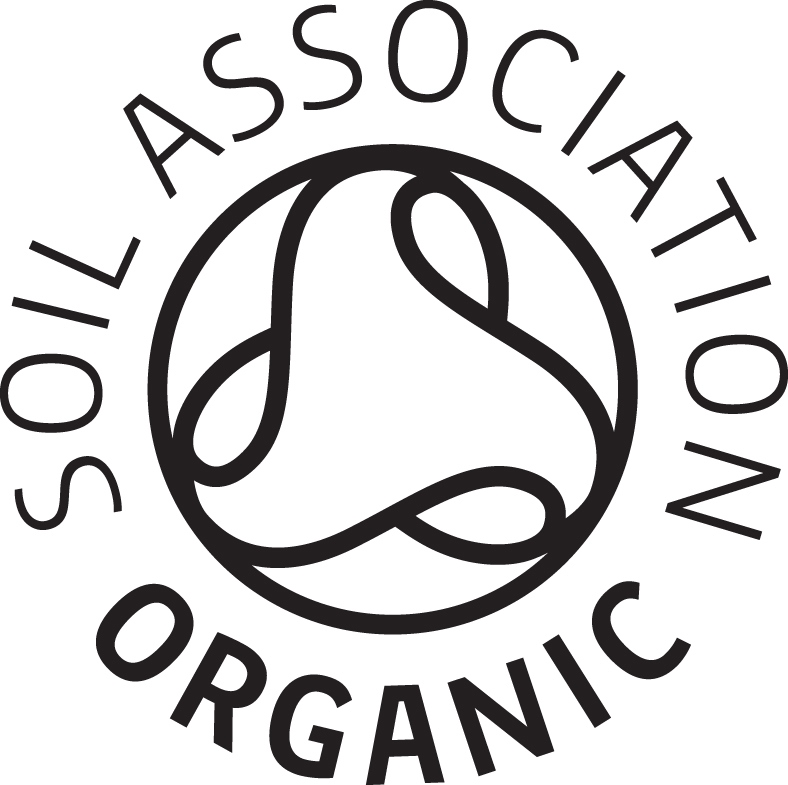Organic cosmetics
Organic cosmetics is an increasingly important market in France. It responds to consumer expectations for the use of healthier products.
It is legitimate to want to knowingly choose effective and healthy products for our skin, our health and the environment. In order to understand what organic cosmetics offer us, it is necessary to understand the practices of use in the conventional cosmetics industry.
State of conventional cosmetics
Conventional cosmetics are mainly composed of synthetic ingredients.
Slightly misleading marketing will of course highlight the main active ingredient, which can be natural, organic, and sometimes so rare that it seems to be part of an exceptional treatment.
Cosmetics are made up of one or more active ingredients, but also of an excipient intended to convey the active ingredients, adjuvants and additives. And in the case of conventional cosmetics, these ingredients can come from “heavy” chemicals.
For the cosmetics industry, it is accepted that it is the dose that makes the poison. This is why you can find carcinogens in your skincare products , endocrine disruptors, neuro-toxins, allergens or irritating substances in small but present proportions.
By the established expression "acts on the upper layers of the epidermis" suggests that all these substances will not penetrate the dermis.
However, little is known about the rate of absorption by the skin and the ability of each chemical to remain stored in the body.
For example, aluminum salts are found in breast cancer and parabens act as endocrine disruptors.
Every day, on average, a woman uses 12 cosmetic products: all these poorly evaluated chemicals ultimately act in negative synergy.
This is why a person's daily exposure to toxic substances causes a accumulation effect in the body: this is "the cocktail".
It is then advisable to read the INCI list, a valuable tool at the service of consumers. The ingredients are listed in order of importance in the composition, except for ingredients present at less than 1%, which may appear according to the manufacturer's wishes.
Organic farming
In organic farming, there is no use of GMOs, chemical fertilizers or synthetic pesticides that are dangerous to the health of people and the planet. This mode of agriculture is in opposition to the intensive chemical agricultural production system. Choosing to use organic cosmetics means supporting agriculture that protects natural resources and biodiversity and limiting our contact with substances toxic.
What is the benefit of organic cosmetics for the skin?
The needs of your skin are hydration and nutrition: unlike ingredients derived from petrochemicals, vegetable raw materials are rich in particularly beneficial substances for skin health: vitamins, essential fatty acids, antioxidants, trace element, amino acids, secondary plant substances... Organic cosmetics offer a synergy of natural or natural-origin ingredients that are better assimilated through the skin than conventional cosmetics.If the formulas of organic cosmetics respond in a respectful way to the needs of the skin, an organic cosmetic product does not mean hypoallergenic: the richness in active substances of plants, in particular in essential oils, can induce a reaction in people who use it. are sensitive
What is green chemistry?
The creators of organic cosmetics cannot do without chemistry either. The galenic must be pleasant to apply, the formula must be stable and keep well so that we can benefit from the benefits of plants.
It takes many different ingredients to design a cosmetic. The objectives of green chemistry, also called sustainable or ecological chemistry, are to avoid pollution and contamination, to use renewable raw materials, to improve energy efficiency and to maintain biodegradability. By these processes (esterification, aqueous extraction, distillation, maceration, hydrolysis, hydrogenation, condensation, etc.), substances with properties suitable for cosmetic treatments, authorized in organic cosmetics, are obtained.
What are the differences between a natural ingredient and an ingredient of natural origin?
There is great interest for the consumer to differentiate purely natural ingredients from ingredients of natural origin. The former (oils, vegetable waxes, vegetable butters) are obtained by a physical process: cold pressing, grinding, centrifugation, etc. The beneficial substances that plants can offer us are intact and act in synergy for the care of our skin. The ingredients of natural origin have been transformed from vegetable substances, by a process of green chemistry, respectful of the environment. environment.
These new ingredients have new properties adapted to create a pleasant, effective and easy-to-use treatment. The role of an ingredient of natural origin is not to replace a natural ingredient. Some certifying bodies limit the rate of ingredients of natural origin authorized in order to promote the share of truly natural ingredients, when other labels do not guarantee any limit.
Organic cosmetics and animal testing
A certified organic cosmetic does not necessarily mean a cosmetic that has not been tested on animals. To ensure that there is no test, prefer cosmetics labeled cruelty-free. Be aware that some small brands may be cruelty-free and not be certified, you can contact these brands directly to find out about their commitments.
Certification of organic cosmetics
"Organic" means from agriculture organic : natural elements such as water, minerals or ingredients from the sea or harvest are therefore not certifiable.
Each certifying body publishes specifications defining the ingredients and processes authorized for the manufacture of its certified cosmetics, there are in fact different requirements between the labels. Can we include water in the organic part of a cosmetic? Since water is not certifiable, it cannot be included in the calculation of the organic share. Some certifying bodies nevertheless authorize floral water in the calculation of the organic share. Floral water, obtained during the steam distillation of essential oils, contains 0.5% essential oils.
Below is information about organic labels, so you can choose the cosmetics that meet your expectations!
Organic labels
ECOCERT labels
ECOCERT is a French control and certification body that issues 2 labels: ECOCERT BIO and ECOCERT ECO
- Prohibited: GMOs, parabens, phenoxyethanol, nanoparticles, silicone, PEG, synthetic fragrances and dyes.
- In cosmetics labeled by ECOCERT, floral water can be included in the calculation of the organic product rate.
- There is no limitation on the use of processed ingredients of natural origin.
 Label Organic Cosmetics:
Label Organic Cosmetics:
- 95% minimum of the total ingredients must be natural, or of natural origin.
- 95% of plant ingredients must come from organic farming.
- 10% minimum of the total ingredients must come from organic farming.
 Label Ecological cosmetics:
Label Ecological cosmetics:
- 95% minimum of the total ingredients must be natural, or of natural origin.
- 50% of plant ingredients must come from organic farming.
- 5% minimum of the total ingredients must come from organic farming.
The finished products are not tested on animals, the ECOCERT labels are therefore not a guarantee of the absence of testing.www.ecocert.fr
Cosmebio labels
Cosmébio is a professional association for ecological and organic cosmetics. The Cosmébio charter meets Ecocert's specifications.
- Prohibited: petrochemical derivatives, plastic derivatives, heavy chemical ingredients, silicones, synthetic fragrances.
- Floral water can be included in the calculation of the organic product rate.
- No limitation on the use of ingredients of natural origin.
 Label Cosmebio:
Label Cosmebio:
- 95% minimum of natural ingredients, or of natural origin.
- 95% minimum of the certifiable ingredients must come from organic farming.
- At least 10% of the total ingredients must come from organic farming.
- Synthetic products allowed: maximum 5%.
 Label Cosmeco:
Label Cosmeco:
- 95% minimum of natural ingredients, or of natural origin.
- At least 50% of the certifiable ingredients must come from organic farming.
- At least 5% of the total ingredients must come from organic farming.
- Synthetic products allowed: maximum 5%.
The finished products are not tested on animals, the Cosmébio labels therefore do not guarantee the absence of testing.www.cosmebio.org
 Nature & Progress
Nature & Progress
Nature et Progrès is an association that brings together agricultural producers, cosmetics manufacturers and consumers. One of N&P's priorities is respect for natural balances. To obtain its label, products must comply with very demanding specifications:
- 100% of the ingredients are organic.
- Priority is given to authentically natural ingredients.
- Restriction of chemical components thanks to a positive list of authorized chemically transformed natural materials.
- Prohibited: petrochemical compounds, silicones, synthetic products.
www.natureandprogres.org
 Soil Association
Soil Association
The Soil Association is the main English organic certification body, it issues 2 levels of certification.
- Priority is given to authentically natural ingredients.
- The following are prohibited: parabens, formaldehyde releasers, PEGs, silicones, quaternary ammoniums, nanoparticles, skin-irritating surfactants, ingredients derived from petrochemicals, perfumes and synthetic dyes
Soil Association Organic: Product containsmore than 95% ingredients from organic farming.Soil Association made with XX% organic: the product contains at least 70% and up to 95% organically grown ingredients. Organic ingredients must be indicated in the composition.www.soilassociation.org
 BDIH
BDIH
The BDIH is a German association that has defined specifications, drawn up by professionals in the natural cosmetics industry.
- 95% of vegetable ingredients that can be organic quality must be.
- Positive list of authorized ingredients.
- Priority is given to authentically natural ingredients.
www.kontrollierte-naturkosmetik.de
NATRUE
NaTrue is a group of manufacturers of natural and organic products and certifies cosmetics under a label, which has three levels of requirement:Organic cosmetics: the product contains
USDA
The USDA is the United States Department of Agriculture. USDA-labeled cosmetics meet three levels of organic rate requirement.
- Restriction of authorized ingredients thanks to a positive list.
- No molecules or synthetic substances.
100% Organic: 100% ingredients come from organic farming.95% Organic: 95% of ingredients are organically grown.Organic Ingredients: 70% minimum organic ingredients.www.ams.usda. gov
Cosmos-Standard
The associations and certification bodies Soil Association, BDIH, Cosmebio, Ecocert and ICEA have jointly created the Cosmos standard. Alongside the label of the certifying body, the indications Cosmos Organic or Cosmos Natural are affixed, depending on the level of certification, this aiming at European harmonization. Depending on the type of cosmetic, 10% to 20 % of ingredients must be of organic quality.https://www.cosmos-standard.org
.





